At home physio
The LTA’s expert physiotherapist, Anna Poyser, is on hand with the first ‘how to’ session, in a series of easy-to-follow at-home tennis physiotherapy exercise guides.
Life at home has become the new norm for us all – working from your bedroom, fitness in the living room and meeting up with friends virtually from the kitchen. But whilst we all continue to adapt to this new lifestyle, it’s more important than ever to do what we can to stay active and mobile. Days spent hunched over your work laptop or catching up on TV can cause new strain on your muscles, but following just a few simple steps can help prevent unnecessary aches and pains.
Anna works with some of the top names in the world of British tennis and is usually responsible for providing essential support whilst they’re away on tour. However, given the current difficulties during lockdown, her attention has shifted to helping stars adapt to the new pressures of home life and keeping them fit and well.
Want to keep healthy and treat your body like a professional tennis player from the comfort of your home? Check out Anna’s home physio guide and incorporate some simple flexibility and mobility training into your daily routine. All you need is tennis ball!
Trigger ball release
Trigger point release exercises are a wonderful way to help release tight, knotted up muscles. They can be done to release muscles that have tensed up due to unsupportive chairs, too much desk and screen time, over or under activity. Treat your problem area by maintaining each exercise for just 10-15 seconds, repeating every day until the pain has disappeared.
Feet
Plantar fasciitis is where you have pain on the bottom of your foot, around your heel and arch, often experienced after bouts of new ‘impact’ exercise such as running. You can easily ease the discomfort with regular stretching exercises…
Sitting on a chair or standing, if preferred. Roll a tennis ball back and forth on the base of the foot.
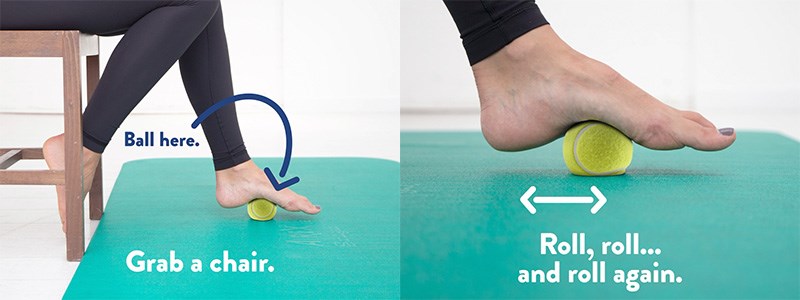
Calves
Alleviate the pressure of tight calf muscles with this simple ‘gastroc’ exercise with your tennis ball. Place the ball on a point on the calf. Bend the opposite leg and allow some weight to move on to the ball and roll it up and down the calf.
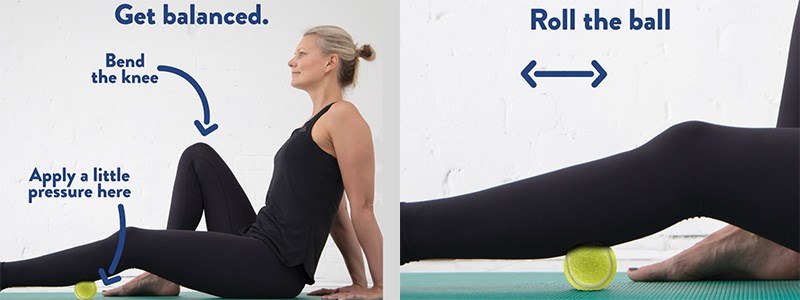
Shins
And not forgetting the front of your lower legs. This is quite a painful one so take this gently to keep lower legs stretched and mobile. Sit on knees and place ball under one shin. Use arms to control weight through the leg.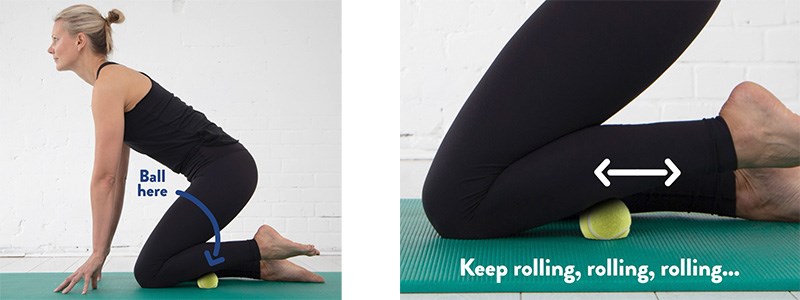
Glutes
If you’ve taken up running or jogging as your daily exercise of choice, your glutes are an important muscle group to look after. They help hip extension, which is the motion that drives you forward, and helps to stabilise your pelvis – crucial to staying upright as you move forward!
Sit the ball under the left glute. Place the left foot onto the opposite leg – forming a figure of 4.
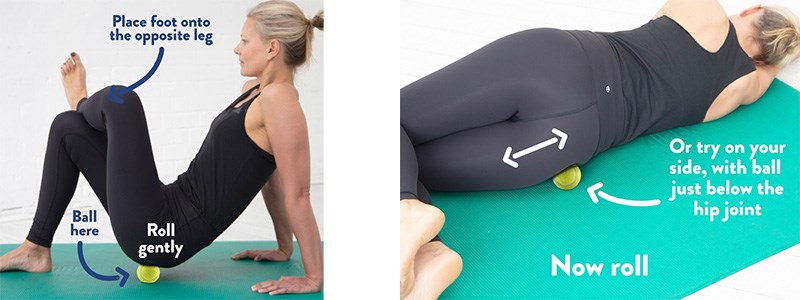
Lie on the side with the ball on the side of the glute, just behind the bony hip joint.
Hamstrings
You might find you have overstretched or pushed hard on muscles by taking up home workouts or a new form of at-home exercise and hamstring pulls are a common ‘overuse’ ‘niggle’. To keep them gently mobile, sit on a chair and place the tennis ball under the top leg. Extend and flex the leg.
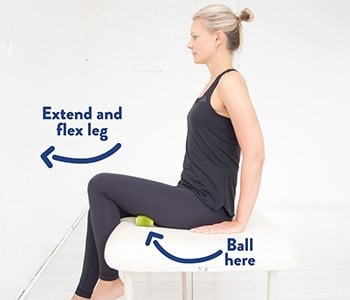
Hip flexor
We might find ourselves seated for longer periods of the day, in kitchen chairs or similar, due to a new home office set up. Our hip flexors need looking after for this, as when you are seated, your knees are bent and your hip muscles are flexed and often tighten up or become shortened. Gentle walking alleviates this and you can help with the following exercise: lie on front and place ball at the top of the anterior hip. Move body back and forth as needed.
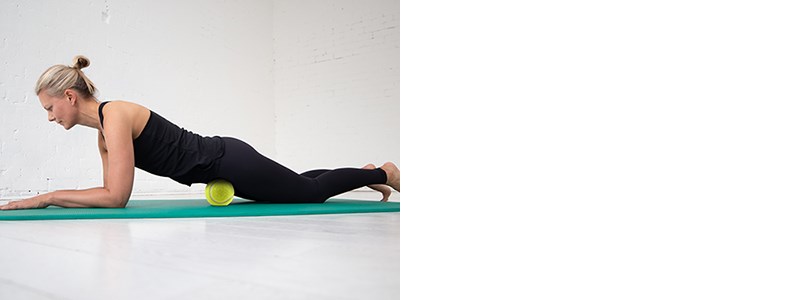
Further improve movement by rolling your ball across your ‘tensor fascia latae’ (TFL) - a hip muscle just above your upper thigh. Lie on front. Place ball on the front but lateral part of hip at the top of the ITB (top of thigh, below your pelvic bone).
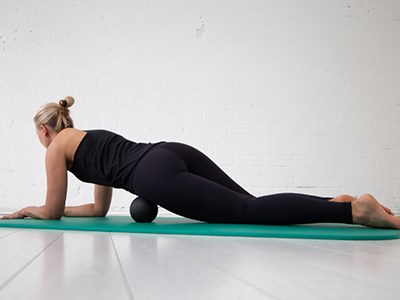
And finally, not forgetting to keep your upper body mobile too…
Gentle stretching of the front pectoral muscles and posterior shoulder can ease tense shoulders and improve posture.
Pecs
Lie on your front. Place the ball on a trigger point on the pecs. Place that arm behind back with a hand resting on the base of the back.
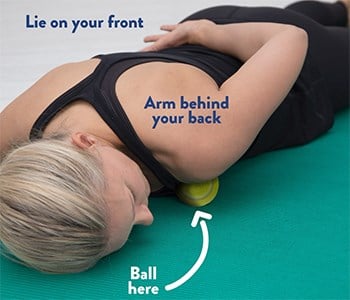
Posterior shoulder
Lie on back and place ball behind the shoulder on a sensitive area.
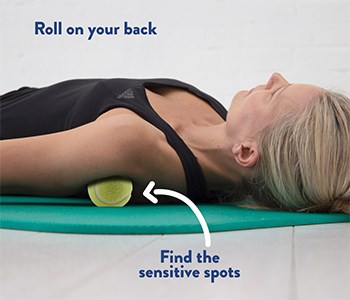
Download all exercises as activity cards...
Don't miss out
Keep up-to-date with our new At Home Physio series, with activities released each week across our channels on Twitter, Facebook and Instagram or sign up to our free LTA Newsletter.
